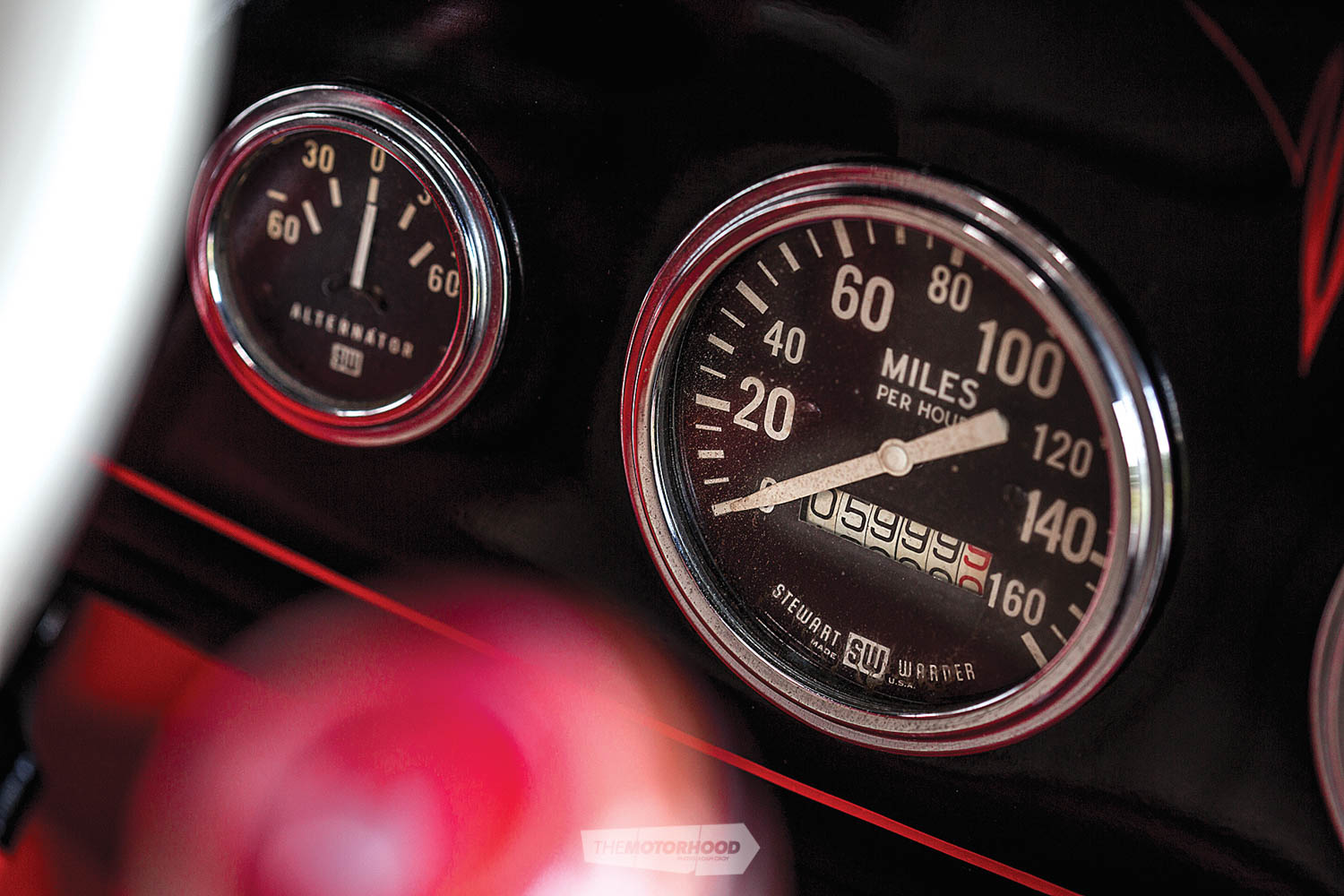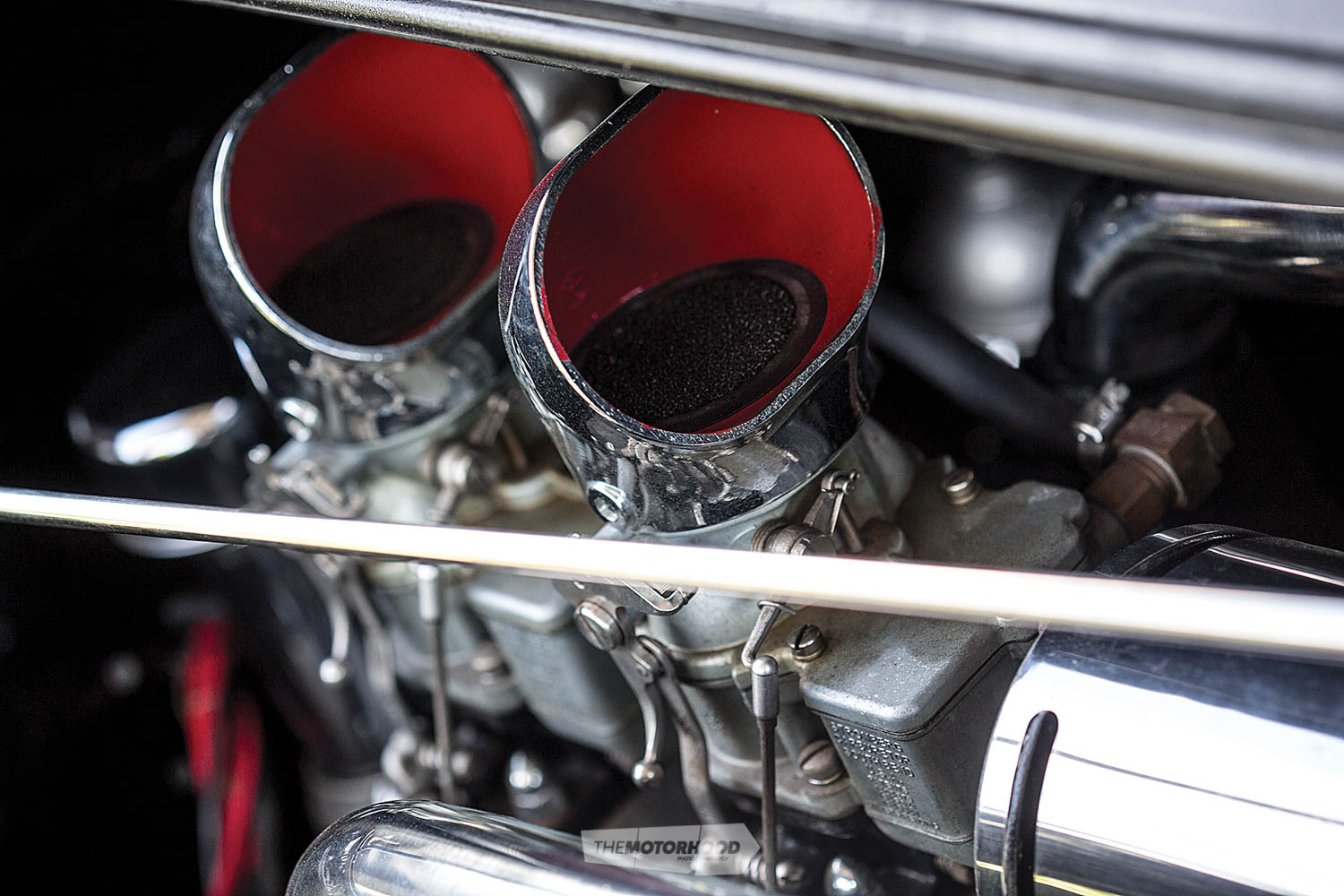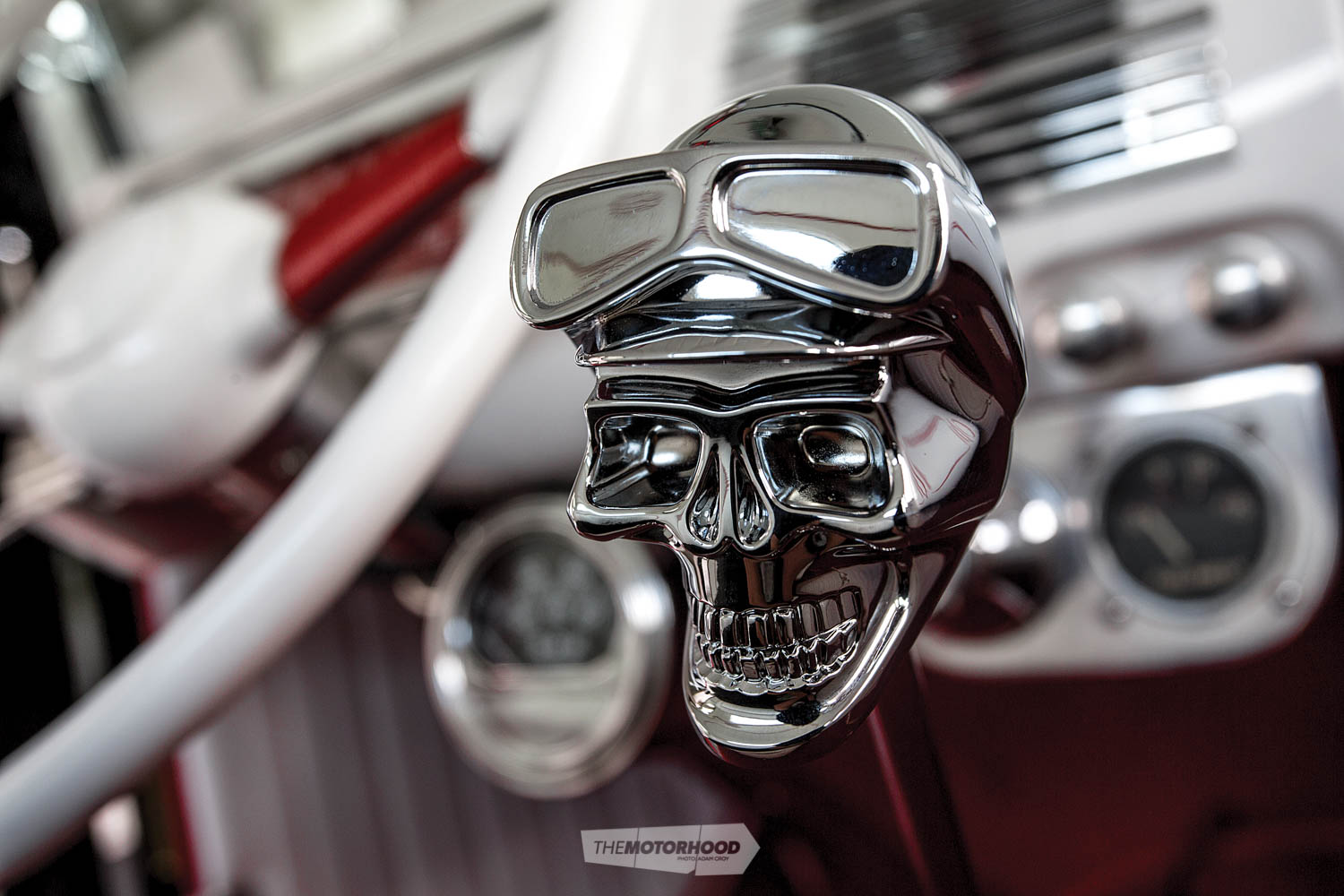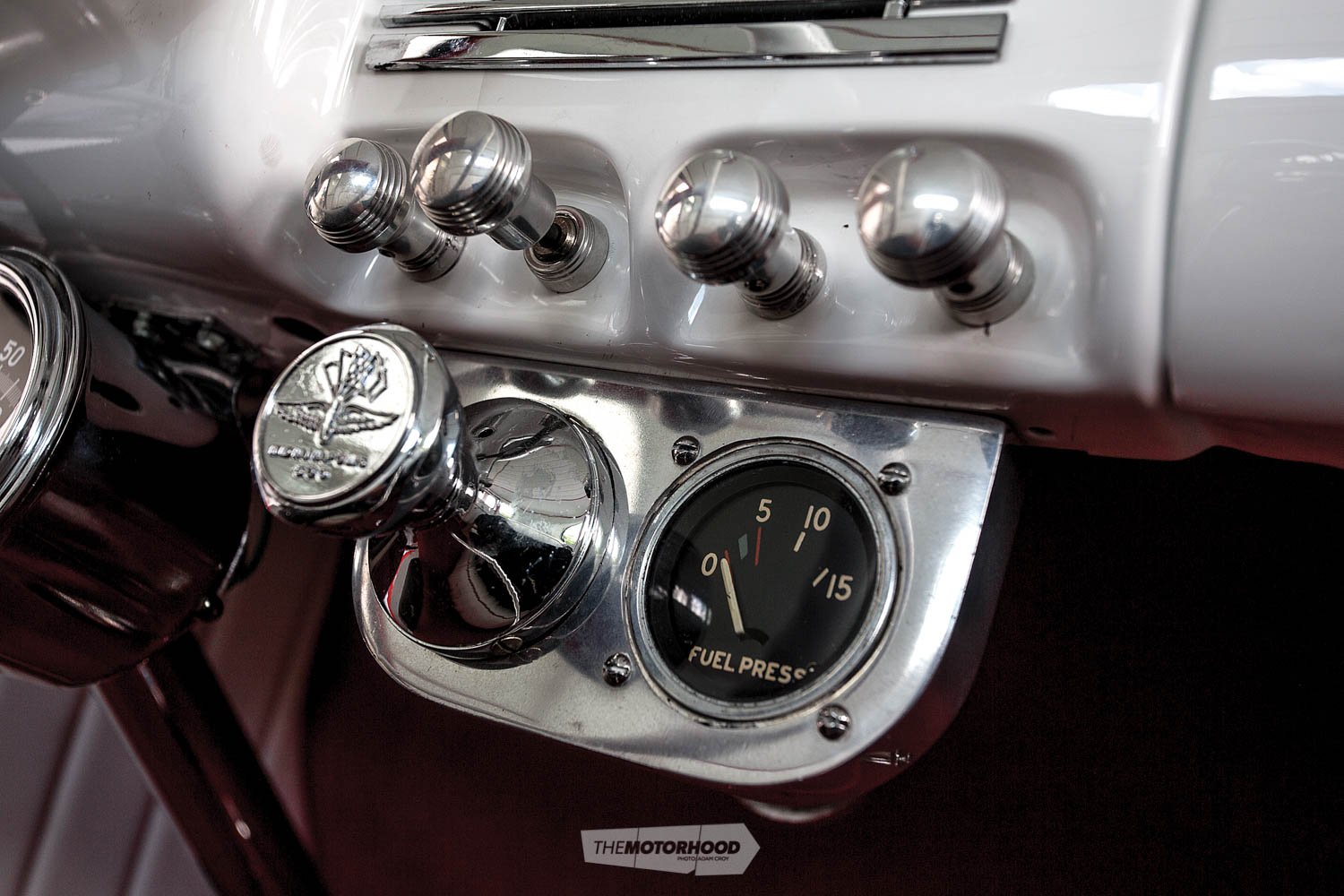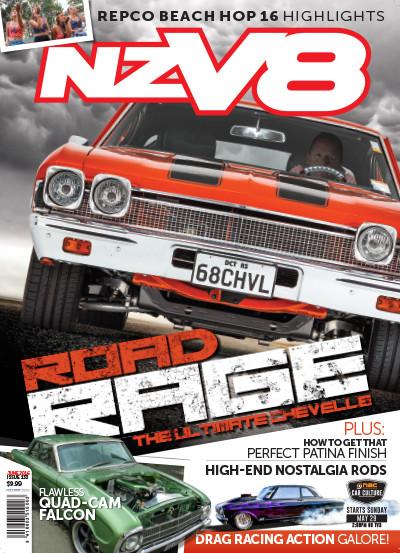There’s something reassuring in knowing that two totally separate pieces of Hawaii’s rich hot rodding history have ended up sharing a stable on the other side of the globe
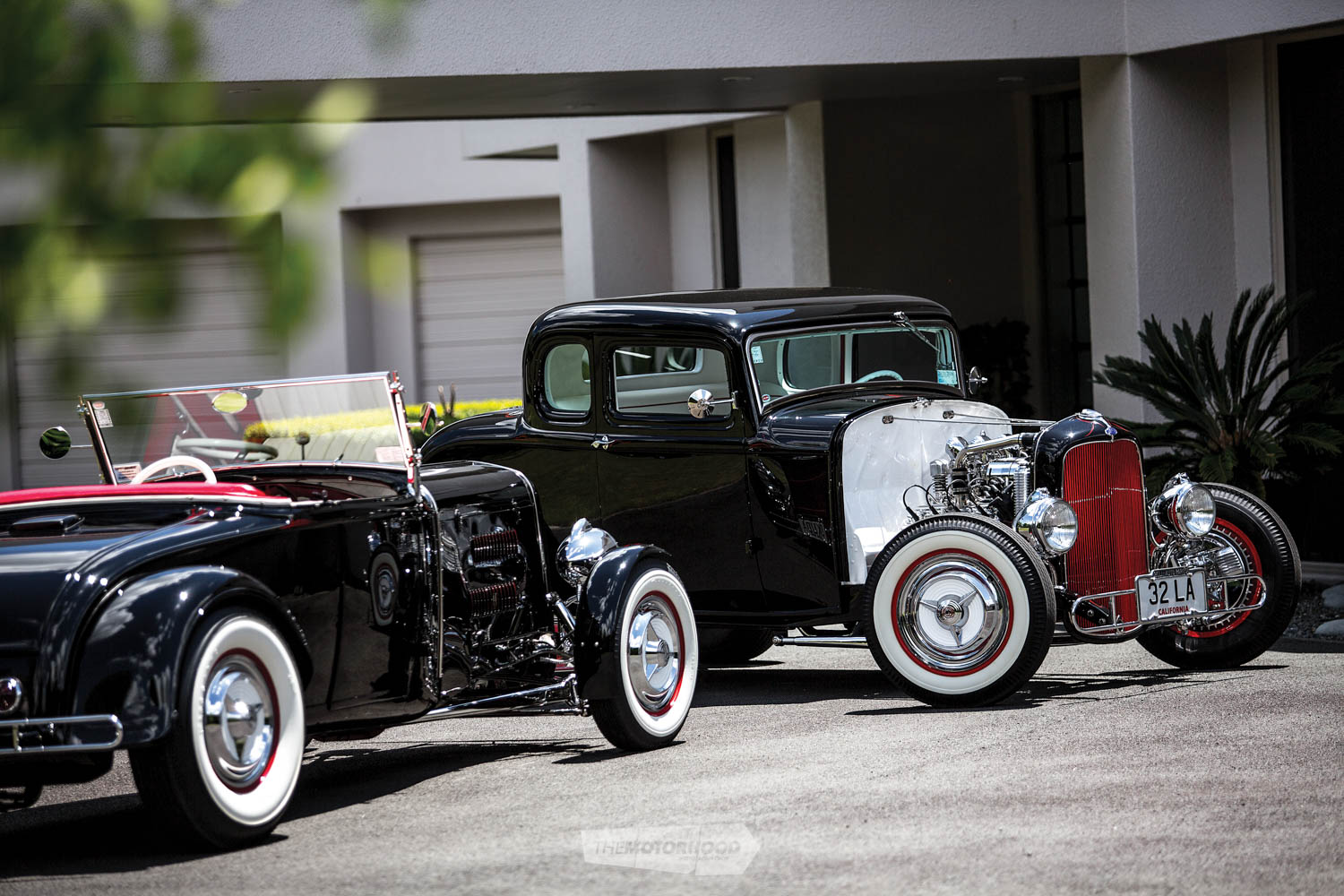
World War II was a pivotal moment in the history of humanity, when, for a time, almost the entire world was united by division; it really goes without saying that nothing would ever be the same again. While that era will always be defined by the war, the dusty footnotes of history will also reveal a hive of activity in the southern California automotive scene. Young servicemen returned home to families, day-to-day life, and the hot rods they’d brushed aside for their time in uniform. Armed with the cutting-edge skills and knowledge that only the lucrative business of war could provide, the evolution of hot rodding was inevitable.
As brands like Edelbrock, Weiand, and Moon sprang up and took root throughout mainland America, young men were getting an easily accessible speed fix well before Lemmy Kilmister was out of nappies — and whatever happens in mainland America, Hawaii is never too far behind. It isn’t all floral shirts and leis; Hawaii and hot rods go hand in hand, and the early ’50s saw a boom in the scene — one that included builds by Rudy Kealoha and Isamu Okuda.
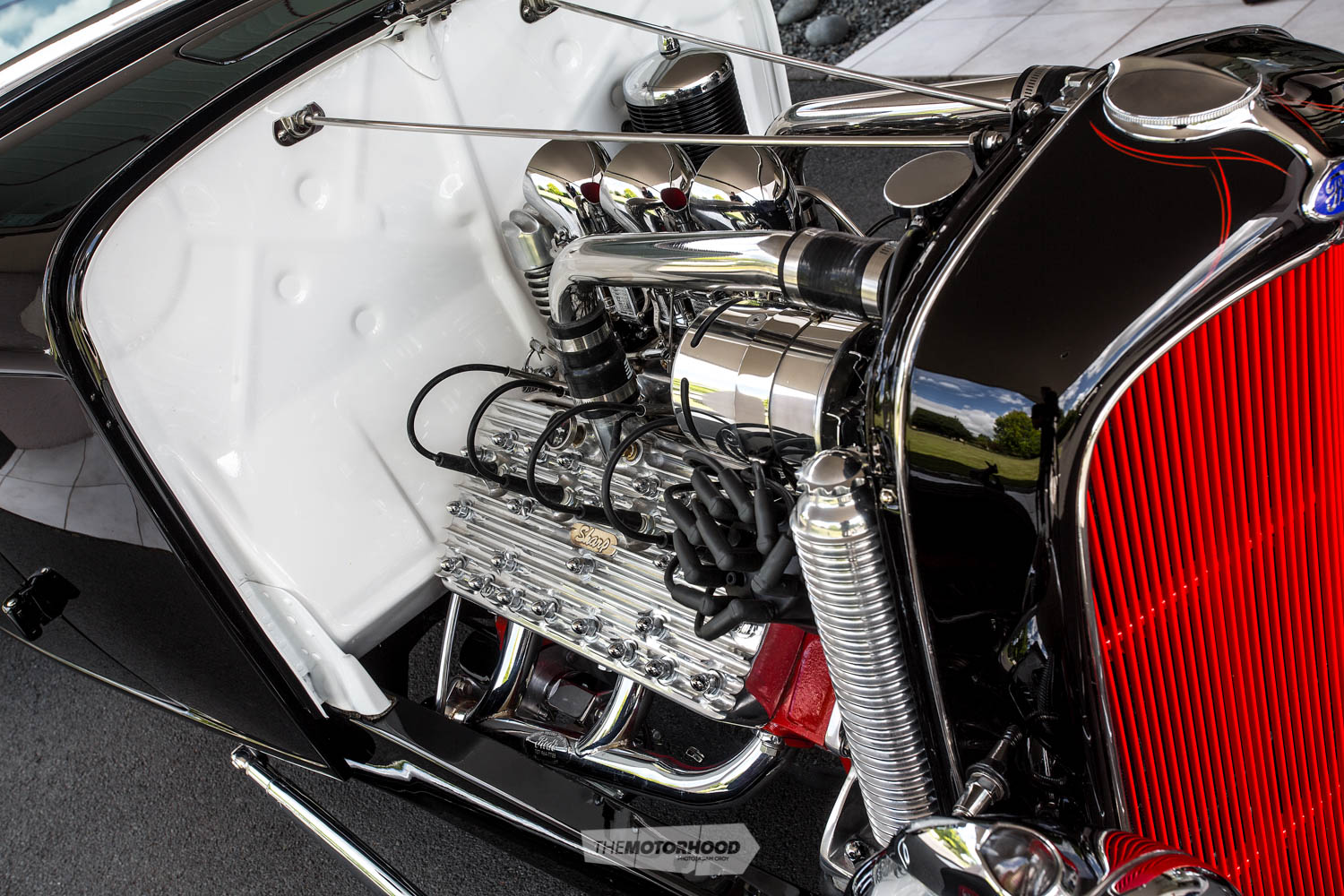
Kealoha (’32 coupe)
In the rose-tinted idyll of early ’50s Honolulu, Rudy Kealoha built his ’32 Ford five-window into one hell of a traditional-style hot rod — although he may not have realized it at the time. The work done on the car was extensive, although not out of the ordinary for the period. Even so, a five-inch body channel with a three-inch roof chop and filled roof — all done by Rudy himself, back in the ’50s — is a pretty good start to a killer hot rod build.
The factory cowl vent was leaded closed to smooth the coupe’s body lines, and a ’40 Ford dash was modified and grafted into the ’32, along with a full complement of ’40 Ford gauges. The rest of the interior was treated to the full monty as was the norm back then — a custom bench seat, custom door cards, custom carpets, and an abundance of tuck ’n’ roll–style upholstering. Result: another ’32 five-window on the burgeoning hot rod scene, and, with a triple-carbed Mercury flathead V8 of 1950 vintage, backed by a floor-shifted ’39 Ford three-speed manual gearbox, what a fine example it was!
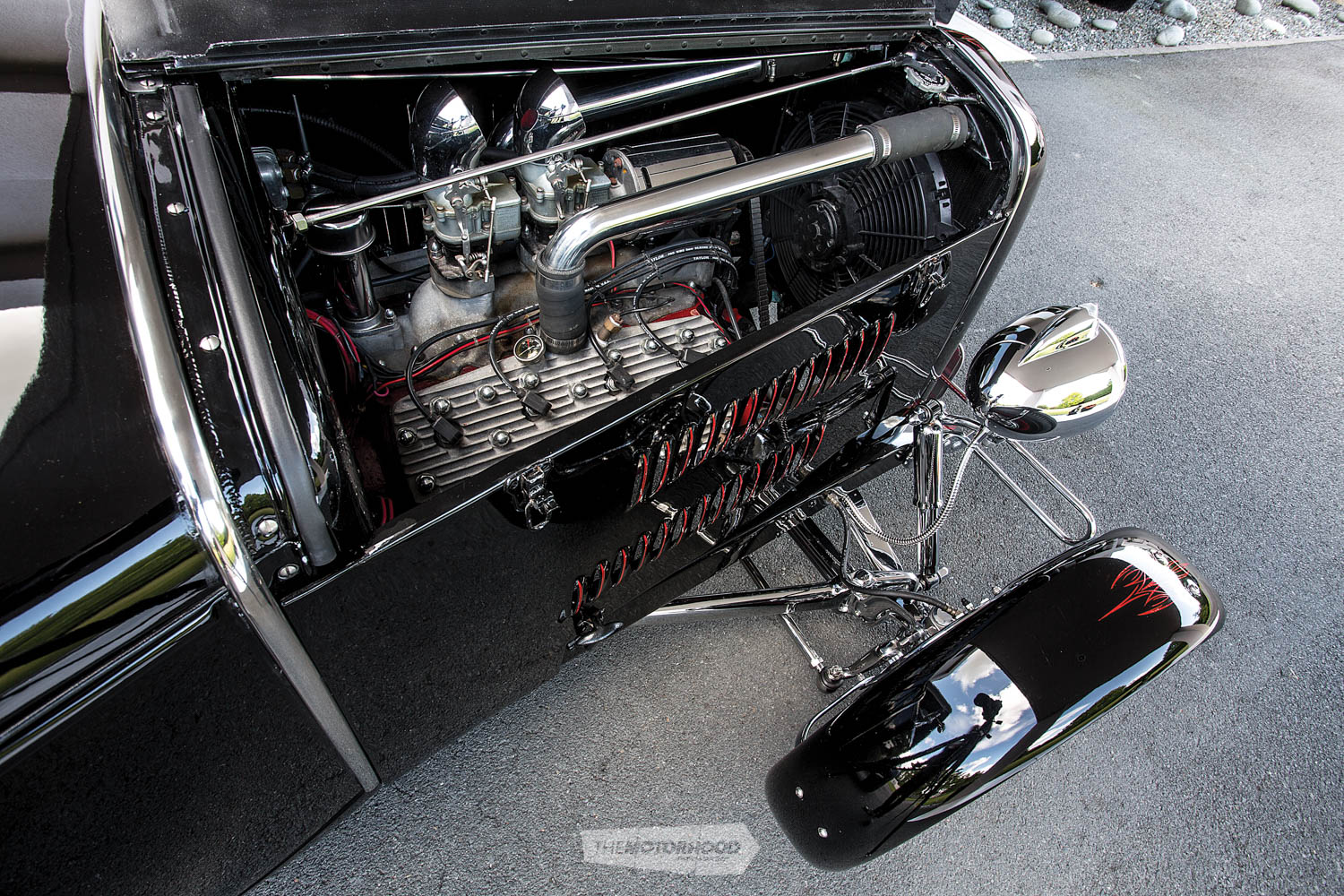
Okuda (Model A)
At the same time, also in Honolulu, Isamu Okuda was hard at work building a ’31 Model A roadster into another shining example of traditional Hawaiian hot rodding. Just like Kealoha, Okuda would stick with flathead power — a 239ci 59A Mercury engine would be just the ticket, with a ’39 Ford three-speed Toploader gearbox giving the hands-on driving experience required. Just as with the Kealoha five-window, getting the stance right would be key — the Model A body was put under the knife, channelled over a ’32 Ford chassis that would become the backbone of the entire build.
The channelling facilitated a need to modify the rear fenders to suit the new height of the body relative to the chassis, and, along with this, custom-made side and rear roll pans. The ’32 Ford radiator surround was also filled, peaked, and shortened to suit the channelling of the body. This was necessary to get the correct proportions, as the custom-made two-piece hood top — and custom-made, louvred hood sides — completely tied the car together, from front to back. Okuda’s finishing touches included shaving the exterior door handles, as well as the cowl-mounted fuel filler — relocating the fuel tank to the boot — and custom making motorcycle-style front fenders and mounting brackets.
During the build process, Okuda extended the ’32 chassis front cross member to allow for the conversion to a ’39 Ford wishbone-style suspension set-up, comprising a factory ’39 front wishbone and ’39 Ford V8 steering box, with custom-fabricated shock upper-mount brackets, incorporating the headlight mounting points. The rear retained the original ’32 Ford transverse leaf spring and perch. Because of the channelled body, Okuda had a bench seat custom-made to fit, and, while the seat’s original builder and upholsterer has been long-forgotten, the seat managed to survive the following half-century in one piece. The remainder of the interior would benefit from the aforementioned removal of the factory fuel tank, which also meant the gauge panel — normally integrated into the fuel tank dash panel — was smoothed and modified to accept a variety of early Stewart Warner gauges, a perfect addition to the car’s simple, old-style cabin.
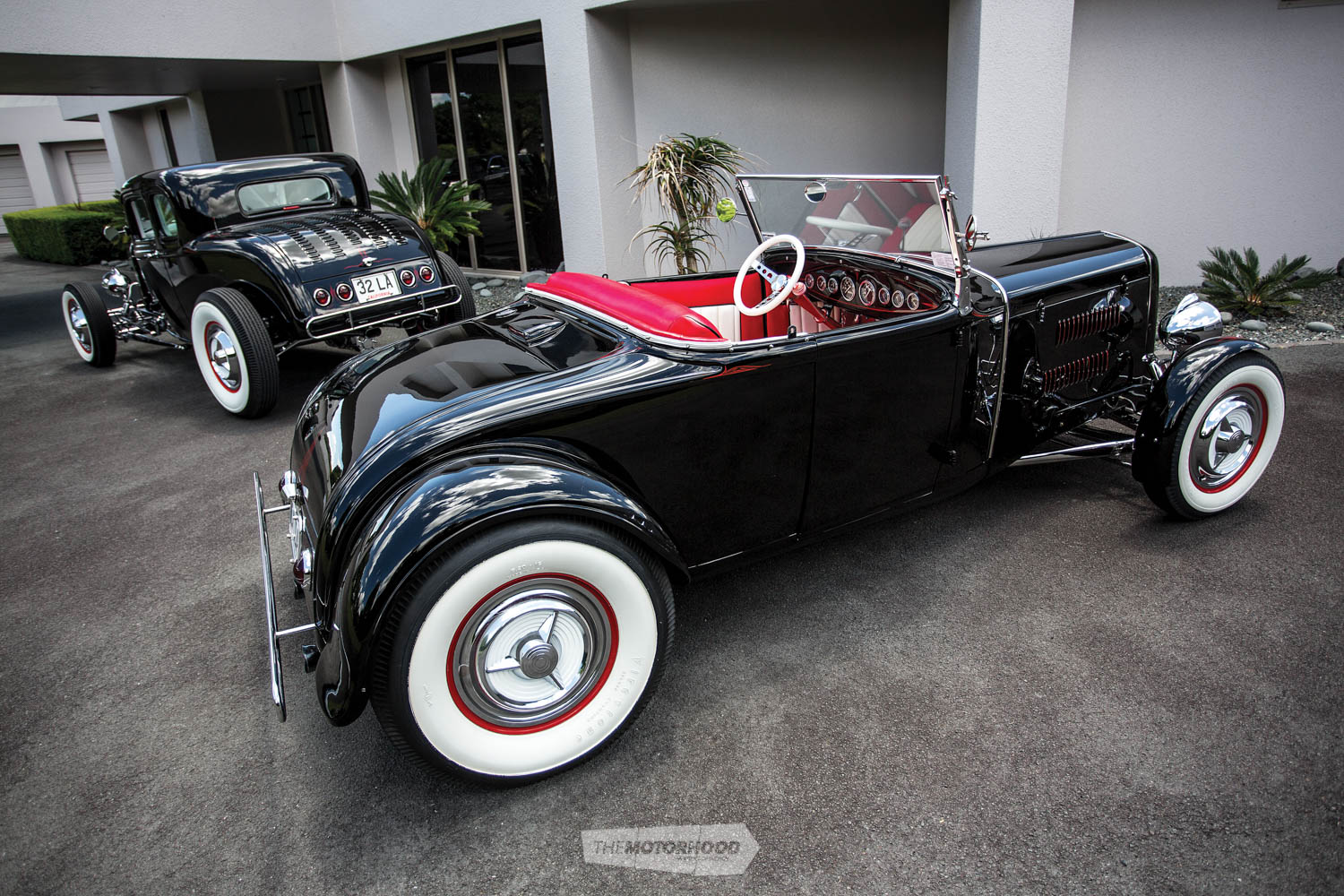
Renaissance
Both the ’32 and the Model A would become prominent members of the post-war Hawaiian hot rodding scene. Okuda’s roadster was around until the late ’60s, and was known for its frequent features in parades and events, while Kealoha’s coupe eventually transformed into a drag car in the late ’60s.
We can’t live in the past forever, though, and this story is about how these two slices of history ended up in a different country, on a different hemisphere. However, even here, the parallels between the two cars can be drawn, and it’s all thanks to one man. Honolulu local Layne Yoshimura was around when the hot rodding scene was in full swing. As a kid in the ’60s, he remembers seeing the ’32 coupe and the Model A. So, when he came across the body and chassis of the Kealoha coupe in 2000, he quickly snatched them up.
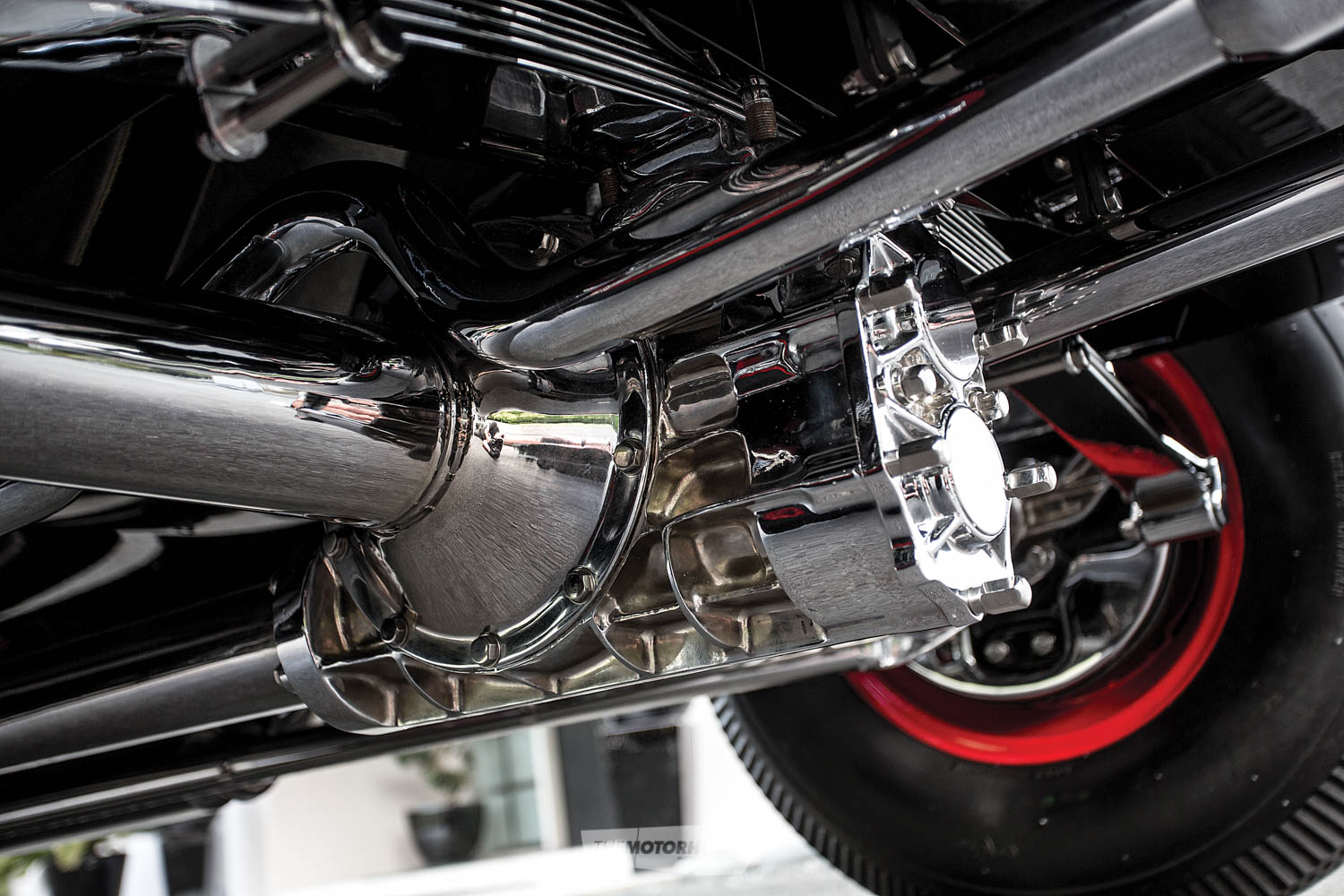
’32 coupe
Yoshimura immediately began to restore the ’32. Work included a thorough overhaul of the bodywork, running gear, and suspension. Hamilton local, Laurie Urlich, came across the car on eBay in 2009. Having always wanted a ’32 Ford five-window coupe, his decision to buy it was a bit of a no-brainer, and Laurie was soon the owner of a real-deal Hawaiian hot rod.
Back in New Zealand, the ’32 did require a touch of remedial work before it could get onto the road, including a custom mounting cradle for the Ford F100 steering box to get the coupe through LVVTA certification. Then there was the aesthetic side of things. Metalworker extraordinaire Brett Stinson was commissioned to refurbish the ’32’s floor panels and patch panel the bodywork where required. With this being done, it would have been rude not to include a rolled rear roll pan and louvred deck lid, perform the obligatory frenching — of the aerial, tail lights, and number plate — and reinstate the original cowl vent that Kealoha had lead-filled half a century beforehand.
The thoroughly refreshed bodywork was then coated in deep layers of PPG Jet Black by White Bros Panelworks, while Jason Fell and the team at Waikato Motor Trimmer were given the opportunity to work their magic on the interior. With beautifully presented tuck ’n’ roll upholstery throughout the cabin, and the ’40 Ford gauge cluster modified to suit the 12V ignition system and the interior colour scheme, the car is everything Laurie ever wanted in a ’32 coupe.
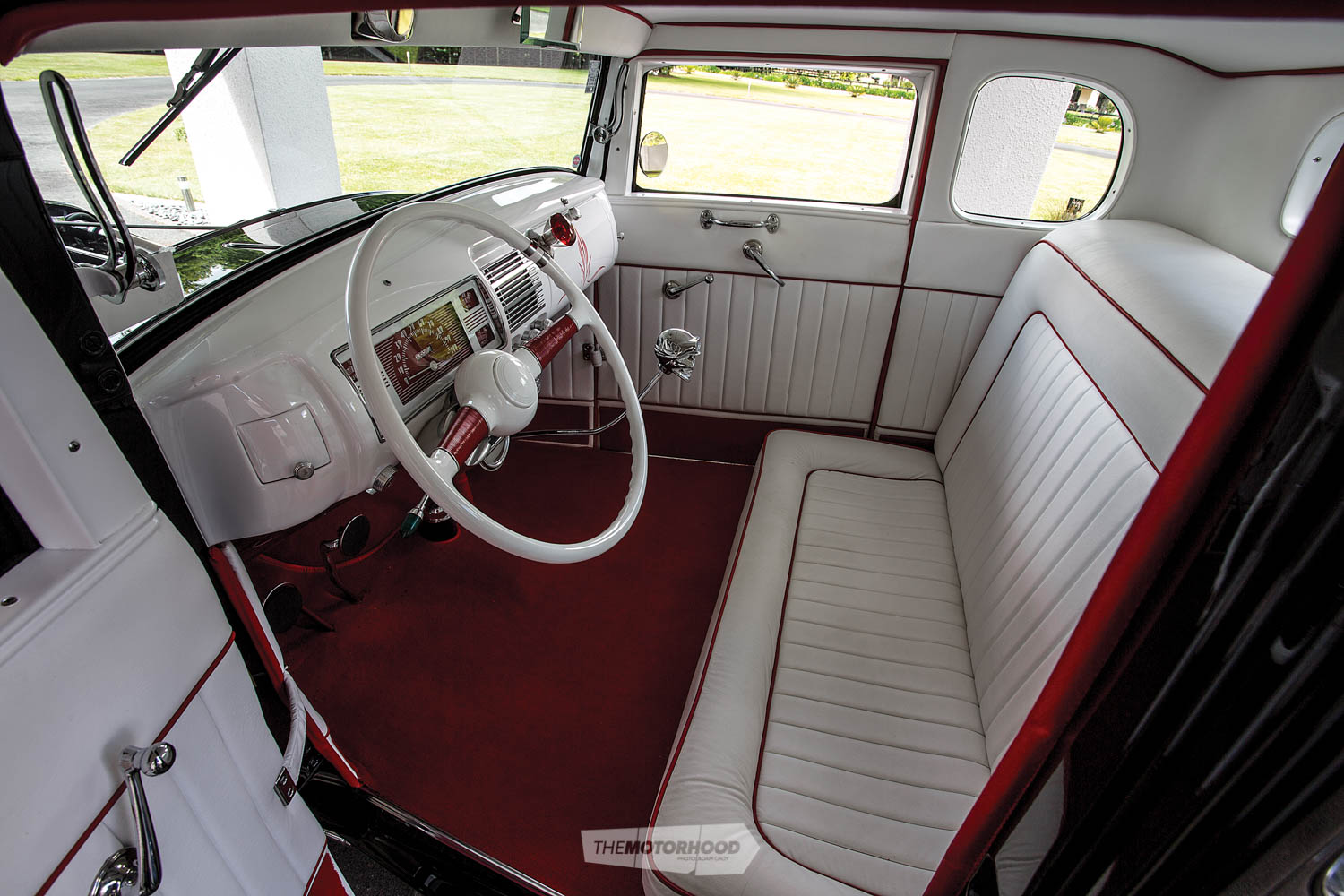
Model A
No sooner had Yoshimura completed his restoration of the old Kealoha ’32 than he came across the Okuda Model A in an old shed. It had been subject to a coating of red oxide primer, but, that aside, everything seemed in fairly good condition, and he purchased it from the family estate in 2009. As soon as Yoshimura had the Model A in his possession, he ripped into it, restoring it to the way he remembered it in the ’60s, armed with only his memory for guidance. The restoration was completed in 2010. Laurie Urlich stumbled across this one on eBay in 2012. When the penny dropped, and Laurie realized it was the same Layne Yoshimura who had sold him his beloved ’32 several years earlier, he couldn’t stop thinking about the Model A.
Six months went by, and the Model A was still available. Laurie emailed Layne to get more information and pictures of the car. All looked good. En route home from the 2014 LA Roadster Show, Laurie decided to take a detour to Honolulu to view the Model A in person. Following further thought, he approached Dan Tyler from Rocket Speed Equipment for advice. It was decided that both of them would go back to Honolulu to give the roadster a complete once-over, to see how much work would be required to get it up to scratch for compliance and certification on New Zealand roads.
It was a whirlwind 24-hour trip over a Tuesday and Wednesday — boxes were ticked, a deal was done, and several boxes of Pabst Blue Ribbon were demolished amidst arrangements to get the Model A back to New Zealand. Just four months after the Model A’s arrival in New Zealand, Dan and the team at Rocket Speed Equipment had taken care of all the modifications needed to get the Model A through LVVTA and NZTA requirements. A mere 11 months after purchasing the Okuda Model A, Laurie had both his ex-Hawaii hot rods legal for New Zealand roads, and ready to forge some more history on the other side of the globe. The metaphorical book on the history of these Hawaiian treasures may be a lengthy one, with colourful, and maybe slightly dust-covered pages, but Laurie’s still got a few more chapters left to write.
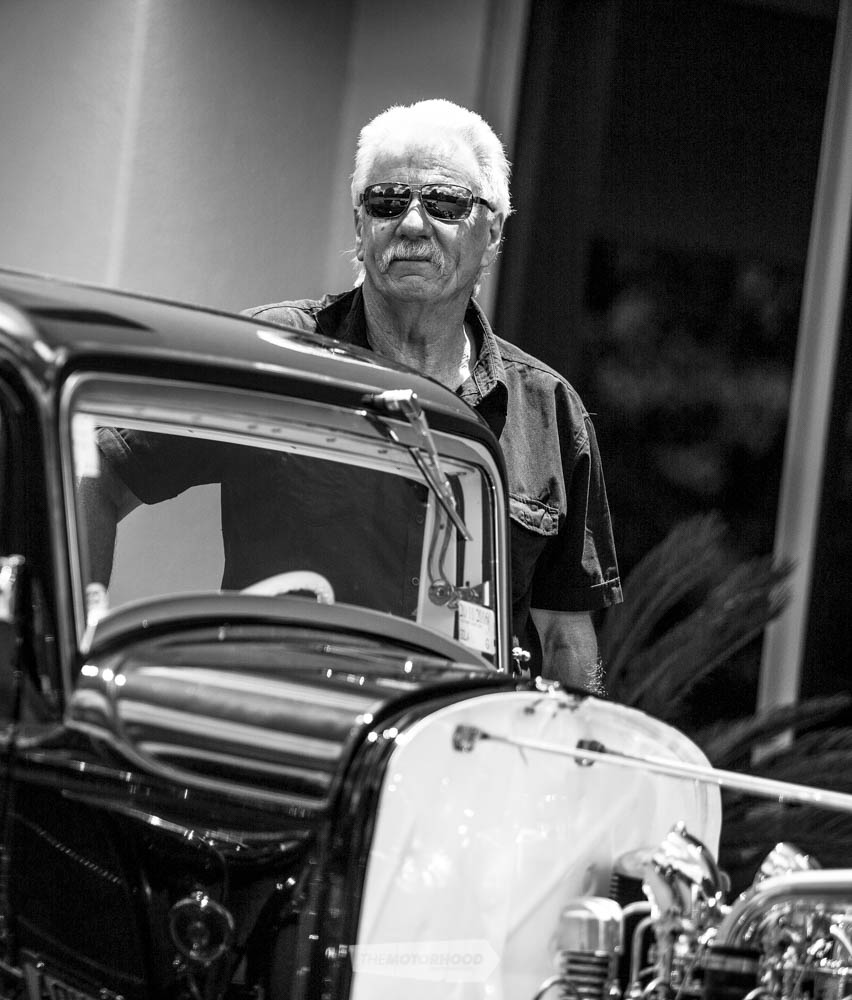
Laurie Urlich
Car Club: Riverside Rodders
Age: 66
Occupation: Semi-retired/trucker
Previously owned cars: ’69 Camaro, ’86 El Camino, Ford Thunderbird, various Ford F100s, Midget, ’86 Chev Camaro drag car
Dream car: I’ve got them
Why the ’32 / Model A? I’ve always wanted a ’32 Ford five-window. I like nostalgia hot rods, and wanted a roadster to go with the ’32 coupe.
Build time: Two years (’32 coupe), 11 months (Model A roadster)
Length of ownership: Six years (’32 coupe), 18 months (Model A roadster)
Laurie thanks: My wife, Alicia; Brett Stinson, Kaipaki Kustom Kars, for all the work over the build of the ’32; Jason Fell at Waikato Motor Trimmer; Dan, Paul, and the team at Rocket Speed Equipment
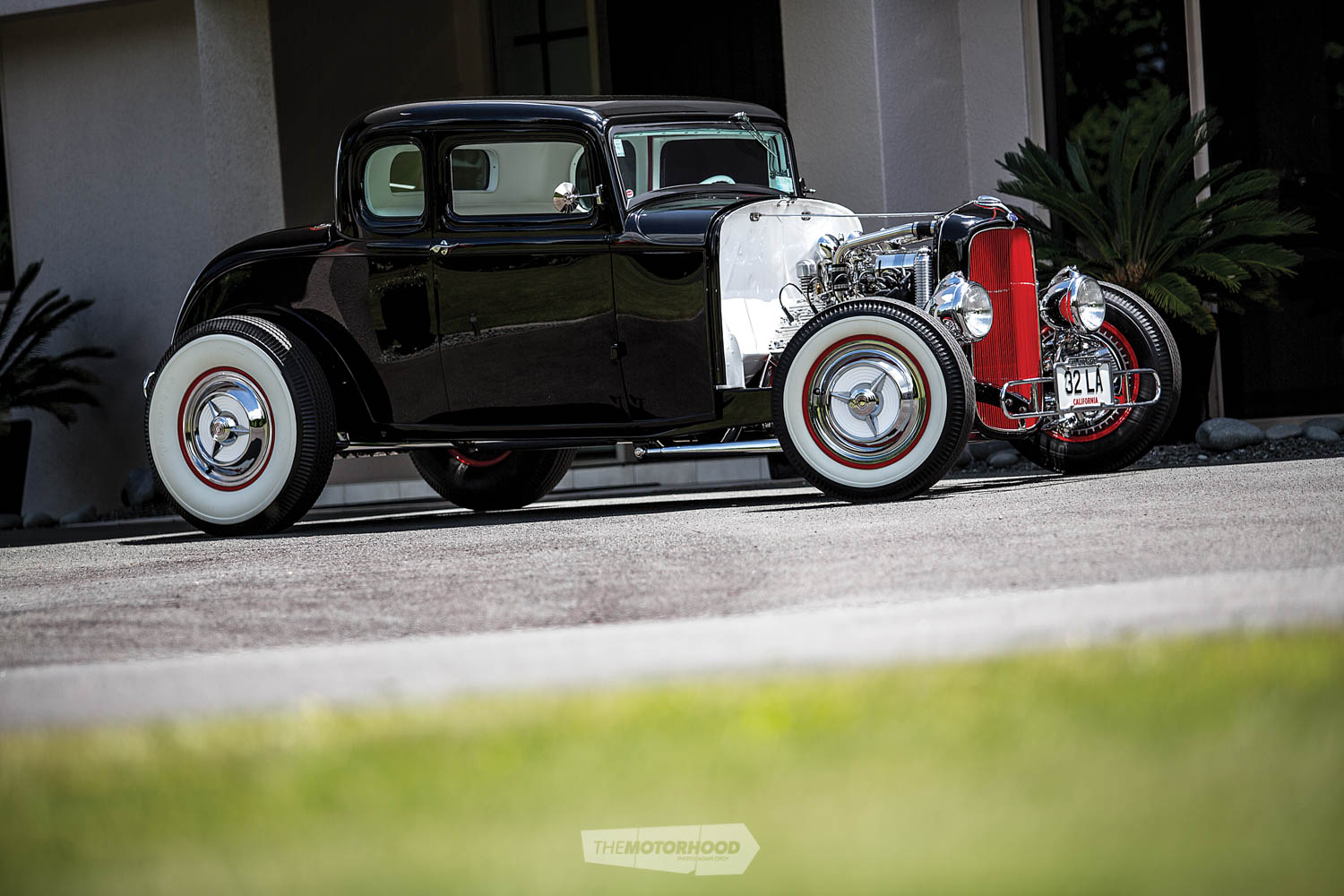
1932 Ford coupe
Engine: 276ci Mercury flathead V8, 35/16-inch bore, offset-ground Mercury crankshaft, 41/8-inch stroke, 21A rods, Sharp finned heads, 1½-inch intake and exhaust valves, Isky Max 1 camshaft, Sharp triple-carb intake manifold, three Stromberg 97 carburettors, progressive throttle linkage, Powerflow electric fuel pump, Holley fuel-pressure regulator, ³/8-inch stainless fuel lines, 60-litre RoadRunner alloy fuel tank, MSD Ready Run distributor, MSD ignition leads, Reds headers, custom twin two-inch exhaust, Smithy’s mufflers, Walker radiator, custom stainless top water pipes
Driveline: ’39 Ford three-speed manual, factory ’39 gears, synchromesh second and third, 24lb flywheel, 10½-inch clutch, three-finger pressure plate, Halibrand Quick Change diff, 3.78:1-ratio crown wheel, 1:1-ratio Quick Change gear set, shortened ’40 Ford torque tube and driveshaft
Suspension: ’32 Ford transverse front leaf spring, front SoCal covered chrome shocks, Super Bell chromed axle and steering arms, Super Bell chromed slingshot arm, chromed F100 steering box, custom mounting cradle, ’40 Ford transverse rear leaf spring, rear alloy knee-action friction shocks, chromed and shortened rear radius rods, Pete & Jake’s shackles front and rear
Brakes: Factory ’32 Ford pedal box, polished and chrome finished, ’39 Ford hydraulic master cylinder, stock Ford bell crank assembly, ’40 Ford 12-inch front hydraulic drum brakes, chromed backing plates, finned air scoops, finned Buick drums, ’40 Ford rear drums, chromed backing plates
Wheels/tyres: 16×4.5-inch ’46 Ford steel wheels, 550×16 Firestone Champion Deluxe whitewall front tyres, 750×16 Firestone Champion Deluxe whitewall rear tyres
Exterior: Five-inch body channel, stock firewall modified to suit channelled body, three-inch roof chop, filled roof, rolled rear roll pan, louvred deck lid, frenched aerial, frenched tail lights, frenched number plate, modified lower firewall, PPG Jet Black paint
Chassis: ’32 Ford un-boxed chassis with original transmission cross member, flattened and modified ’32 Ford cross member, original ’32 Ford flattened front cross member
Interior: Custom bench seat, custom door cards, custom carpets, tuck ’n’ roll hood lining, ’40 Ford steering wheel, ’39 Ford chromed and modified transmission shifter, modified ’40 Ford gauges, ’40 Ford dashboard modified to fit, custom floor
Performance: Untested
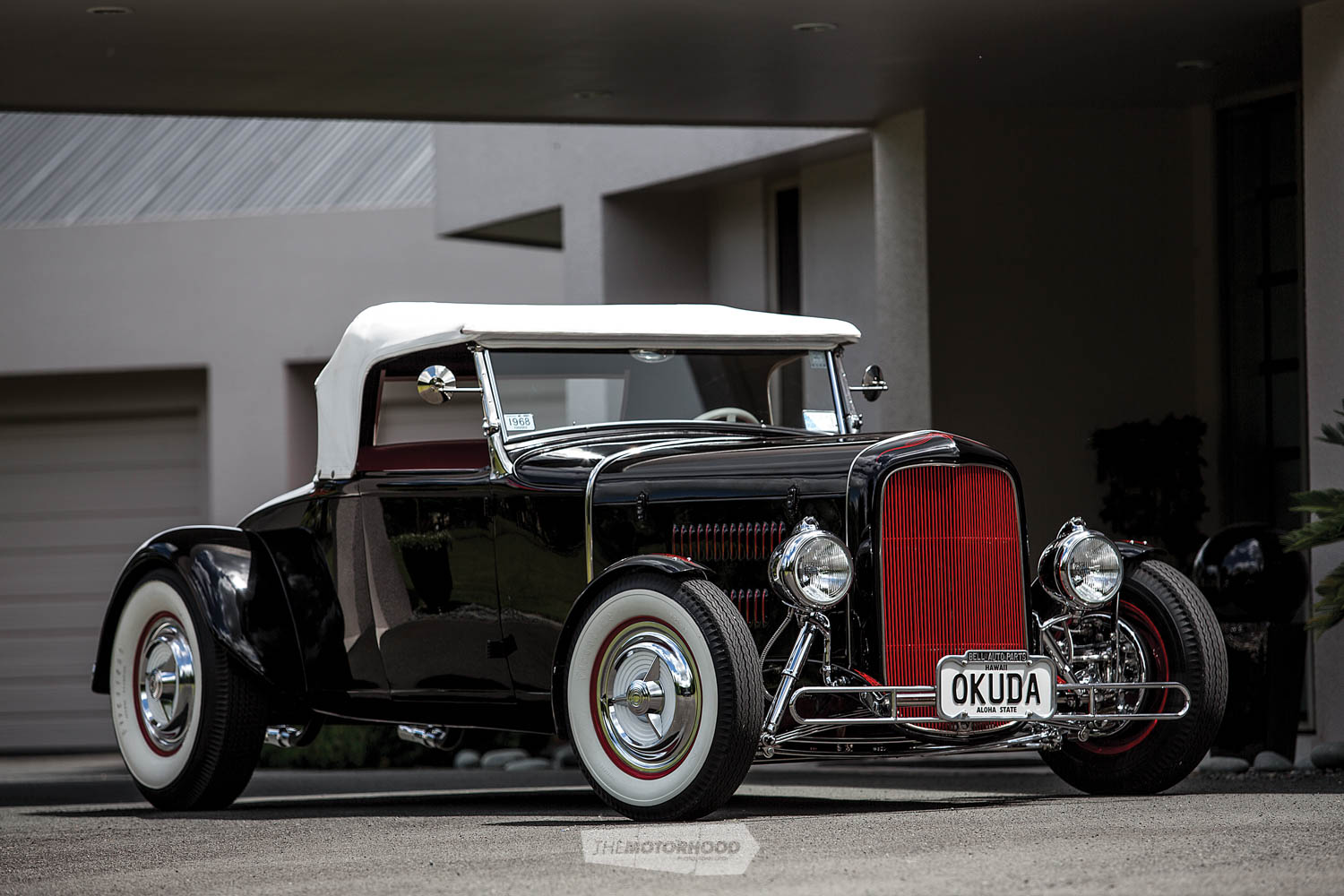
1931 Ford Model A roadster
Engine: 239ci 59A Mercury flathead V8, ’46 Mercury block, original Mercury crankshaft, original Mercury pistons, standard bore, Offenhauser finned heads, Isky Max 1 camshaft, Johnson adjustable lifters, Isky valve springs, Offenhauser regular twin-carburettor intake manifold, two Holley 94 two-barrel carburettors, electric fuel pump, dual-carb fuel block, MSD electronic ignition, MSD 6AL ignition module, MSD leads, MSD coil, Reds headers, twin two-inch exhaust, twin 22-inch Cherry Bomb mufflers, custom chrome tailpipes, custom Walker radiator, electric fan
Driveline: ’39 Ford Toploader three-speed manual, ’47 Ford gear set, 24lb steel flywheel, 10½-inch clutch, Ford three-finger pressure plate, ’32 Ford diff, Mercury 3.54:1 final drive ratio, factory tapered axles with keyways, factory torque tube, enclosed six-spline driveshaft
Suspension: SoCal chrome-finished forged four-inch drop axle, ’39 Ford chromed front wishbone, SoCal chrome front shocks, custom front shock upper-mount brackets, chrome front shock lower shackle mounts, chrome shackles, ’39 Ford V8 steering box, shortened steering shaft, ’32 Ford transverse rear leaf spring, ’32 Ford rear spring perch, painted rear shocks, ’32 Ford rear shackles
Brakes: Non-boosted custom brake pedal, GM dual-circuit reservoir, ’39 Ford 12-inch hydraulic front drum brakes, ’39 Ford 12-inch hydraulic rear brakes
Wheels/tyres: 15×4.5-inch ’46 Mercury front steel wheels, 15×5-inch ’46 Mercury reversed rear steel wheels, NOS 15-inch Starfire hubcaps, 560×15 Firestone bias-ply front whitewall, 820×15 bias-ply rear whitewall
Exterior: Channelled body, custom side and rear roll pans, custom two-piece hood top, custom louvred hood side panels, heavily modified ’32 Ford grille, shaved exterior door handles, modified rear fenders, custom front cycle-style fenders, removed cowl filler, PPG Jet Black paint
Chassis: ’32 Ford chassis, factory ’32 transmission cross member, factory curved rear cross member, extended ’32 Ford front cross member to suit ’39 Ford wishbone set-up
Interior: Custom bench seat & re-upholstery, Moon 13½-inch steering wheel, chromed factory ’39 Ford shifter, marble shift knob, early original Stewart Warner gauges, original fuel tank, dash panel removed and modified for Stewart Warner gauges, ’49 Ford under-dash handbrake lever
Performance: Untested
This article originally appeared in NZV8 magazine issue No. 133 — to get your grubby mitts on a print copy, click the cover below





